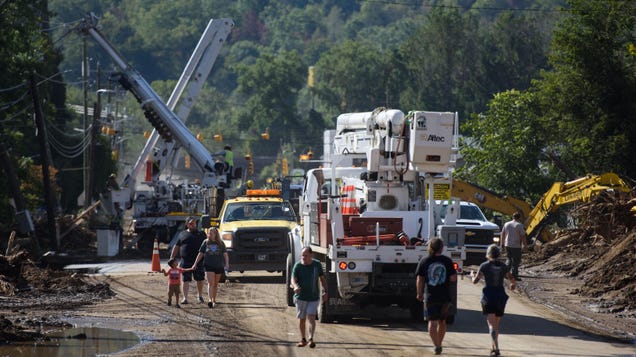Understanding the Impact of Hurricane Helene on the Automotive Industry
Hurricane Helene, a powerful storm that wreaked havoc across the U.S. Southeast, has left a lasting mark not only on the communities it affected but also on the automotive industry. The ramifications of such natural disasters extend far beyond immediate destruction, influencing supply chains, production schedules, and consumer behavior. This article delves into the multifaceted effects of Hurricane Helene on the automotive sector, providing insights into how businesses and consumers can navigate these challenges.
The Immediate Aftermath: Damage Assessment and Recovery
In the wake of Hurricane Helene, the immediate focus for affected areas is assessing damage and beginning recovery efforts. According to the National Oceanic and Atmospheric Administration (NOAA), hurricanes can cause billions of dollars in damages, disrupting local economies and infrastructure. For the automotive industry, this means evaluating the state of manufacturing plants, dealerships, and supply chains that may have been impacted.
For instance, if a manufacturing facility is located in a storm-affected area, production may halt for weeks or even months. This disruption can lead to shortages of specific vehicle models and parts, creating a ripple effect throughout the industry. Companies like Ford and General Motors, which rely on just-in-time manufacturing, may find themselves facing significant delays in production schedules, ultimately affecting their ability to meet consumer demand.
Supply Chain Disruptions: A Global Perspective
The automotive industry operates on a global scale, with parts and materials sourced from various countries. Hurricane Helene’s impact on U.S. ports and transportation infrastructure can lead to delays in shipping and receiving essential components. A recent study by the Automotive Industry Action Group (AIAG) highlights that supply chain disruptions can lead to a 20% increase in production costs and a 30% decrease in delivery reliability.
For example, if a key supplier in the Southeast is unable to deliver parts due to storm damage, manufacturers may need to seek alternative suppliers, which can be both costly and time-consuming. This situation not only affects production timelines but also has the potential to increase vehicle prices for consumers, as manufacturers pass on these costs.
Consumer Behavior: Shifts in Demand and Preferences
Natural disasters often lead to shifts in consumer behavior, particularly in the automotive sector. Following Hurricane Helene, there may be an increased demand for certain types of vehicles, such as trucks and SUVs, which are perceived as more capable of handling adverse weather conditions. Additionally, consumers may prioritize purchasing vehicles equipped with advanced safety features and all-wheel drive capabilities.
A survey conducted by the National Automobile Dealers Association (NADA) found that 65% of consumers consider safety features to be a top priority when purchasing a vehicle, especially after experiencing a natural disaster. This shift in consumer preferences can influence manufacturers’ marketing strategies and product offerings, pushing them to focus on safety and durability in their new models.
Long-Term Implications: Building Resilience in the Automotive Sector
As the automotive industry grapples with the immediate effects of Hurricane Helene, it is essential to consider long-term strategies for building resilience against future natural disasters. Companies must invest in robust supply chain management practices, diversify their supplier base, and enhance their disaster recovery plans.
Moreover, the industry can benefit from adopting advanced technologies such as artificial intelligence and data analytics to predict and mitigate the impact of disruptions. A report from McKinsey & Company emphasizes that companies leveraging digital tools can improve their supply chain visibility and responsiveness, ultimately leading to better decision-making during crises.
In addition, manufacturers should consider the environmental impact of their operations. By investing in sustainable practices and resilient infrastructure, the automotive industry can not only reduce its carbon footprint but also better prepare for the challenges posed by climate change and extreme weather events.
Navigating the Future: Opportunities Amidst Challenges
While Hurricane Helene presents significant challenges for the automotive industry, it also offers opportunities for innovation and growth. As companies adapt to changing consumer preferences and supply chain dynamics, there is potential for the development of new technologies and business models that prioritize sustainability and resilience.
For instance, the rise of electric vehicles (EVs) and autonomous driving technology could reshape the automotive landscape. As consumers become more environmentally conscious, manufacturers that prioritize EV production may find themselves at a competitive advantage. Additionally, the integration of smart technologies can enhance vehicle safety and performance, aligning with the evolving demands of consumers.
In conclusion, the impact of Hurricane Helene on the automotive industry serves as a reminder of the interconnectedness of global supply chains and the importance of resilience in the face of adversity. By understanding the immediate and long-term implications of such events, industry stakeholders can better prepare for future challenges while seizing opportunities for growth and innovation.

